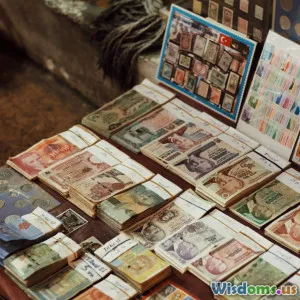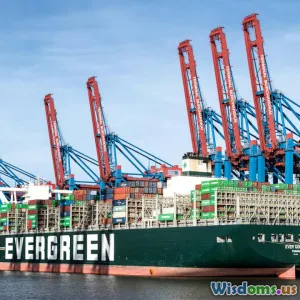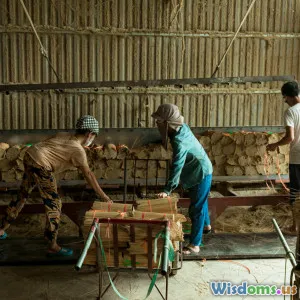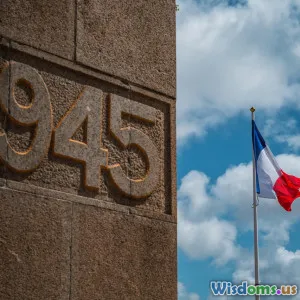
How Oil Changed the Fate of Middle Eastern Economies
10 min read Explore how oil transformed Middle Eastern economies, reshaping wealth, geopolitics, and society for enduring impact. (0 Reviews)
How Oil Changed the Fate of Middle Eastern Economies
The discovery of oil beneath the vast deserts of the Middle East is perhaps one of the most transformative economic events of the 20th century. What once were modest economies based largely on agriculture, trade, and pilgrimage suddenly entered a sphere of immense wealth and global geopolitical significance. This article digs deep into the historical context, economic transformations, geopolitical implications, societal changes, and future challenges that oil has posed for Middle Eastern economies.
Introduction: Awakening the Sleeping Giant
The image of oil rigs dotting the deserts, symbolic wealth pouring into once impoverished nations, and Middle Eastern countries wielding outsized influence on the world stage is now a familiar narrative. However, before the first commercial oil well was struck in Persia in 1908, the Middle East was not destined automatically for this destiny.
How did this black gold seam alter the fates of countries whose economies for centuries hinged on trade routes, nomadic practices, and modest local industries? The journey from barrels to billions unravels complex economic, political, and social phenomena worth understanding for anyone interested in global development or international relations.
The Dawn of Oil: Historical Emergence and Early Impact
The First Oil Boom: Persia’s Masjid-i-Suleiman
In 1908, the Anglo-Persian Oil Company (now BP) discovered commercial oil in Masjid-i-Suleiman, Iran. This event triggered a gold rush of interest across the region, as foreign companies identified untapped reservoirs beneath the deserts of Arabia, Iraq, Libya, and beyond.
Early oil extraction was led primarily by Western firms under colonial or semi-colonial arrangements. These arrangements often meant that indigenous populations saw only a fraction of profits initially. Yet soon enough, oil revenues became critical revenue streams.
For example, Saudi Arabia's first commercial well, Dammam No. 7, struck oil in 1938, transforming a desert kingdom with scarce resources into a focal point of global energy supply.
The Rise of Oil-Dependent Economies
By mid-20th century, many Middle Eastern countries had become heavily dependent on oil exports. According to data from the U.S. Energy Information Administration, oil revenues constituted around 70% to 90% of total exports for these nations by the 1960s and 1970s.
This infusion of capital funded large infrastructure projects, education, and modernization efforts, propelling nations such as Kuwait, Saudi Arabia, and the United Arab Emirates onto the global stage.
Economic Transformation: From Trade Routes to Oil Wealth
Rapid Urbanization and Infrastructure Development
Oil money enabled unprecedented investment in urban infrastructure. Riyadh evolved from a small town to a sprawling metropolis. Dubai transformed into a global city with cutting-edge skyscrapers, airports, and luxury tourism. This rapid urban development improved living standards and created new economic sectors.
For instance, the UAE invested heavily in diversifying its economy through ports like Jebel Ali and tourism hubs.
Fiscal Boom and Public Sector Growth
Government revenues exploded. Oil rents financed public sector growth, including education, health, and social welfare programs. According to the World Bank, many Gulf Cooperation Council (GCC) nations allocated over 80% of government budgets from oil income during peak decades.
This swell in public spending enhanced human capital but also created employment dependence on the state, affecting labor markets and work culture.
Creation of Sovereign Wealth Funds
Recognizing that oil wealth is finite, several Middle Eastern countries established sovereign wealth funds to invest excess revenues globally. For example, Norway's Government Pension Fund is often quoted, but equally notable is the Abu Dhabi Investment Authority (ADIA), established in 1976. ADIA manages hundreds of billions in assets, underscoring a strategic approach to wealth preservation beyond oil.
Geopolitical Repercussions: Oil as a Catalyst for Power
Energy Politics and Global Influence
Middle Eastern oil reserves quickly became a cornerstone of global energy security. With OPEC (Organization of the Petroleum Exporting Countries) headquartered in Vienna but dominated by Middle Eastern members such as Saudi Arabia and Iraq, the region wielded the ability to influence oil prices.
The 1973 Oil Embargo, in response to U.S. support for Israel, demonstrated how oil could be wielded as a foreign policy tool, causing global economic shocks and underscoring the strategic dependence of Western economies on Middle Eastern oil.
Regional Conflicts and Oil
The stakes attached to oil wealth have often increased tensions both within and between states. The Iran-Iraq war (1980-1988), while multifaceted, was also partially tied to control of oil fields. Similarly, Gulf Wars involved securing energy supplies and protecting infrastructure.
Oil pipelines and infrastructure have frequently been strategic targets and priorities, impacting diplomatic relations and regional security.
Societal Changes: Wealth and Modernity in the Desert
Social Welfare and Quality of Life
Oil wealth allowed unprecedented social welfare developments stretching education, healthcare, and subsidized services. The rise in literacy rates, life expectancy, and reduction of poverty are direct results.
For example, Qatar, leveraging oil and natural gas wealth, boasts among the highest GDP per capita worldwide and has invested heavily in free education and healthcare.
Cultural Shifts and Challenges
Rapid modernization challenged traditional ways of life. Urbanization and influxes of foreign labor created a multicultural environment but also social stratification. Many Gulf states rely heavily on expatriate workers, sometimes comprising over 70% of the population in places like the UAE and Qatar.
Balancing tradition with modernity remains an ongoing social discourse.
The Road Ahead: Diversification and Sustainable Futures
Economic Diversification Efforts
Heavy dependence on oil revenue poses risks, notably price volatility and the eventual depletion of reserves. Countries like Saudi Arabia with its "Vision 2030" plan, aim to diversify economies through investments in tourism, technology, and renewable energy.
Examples include the NEOM megacity project in Saudi Arabia and Dubai’s push into finance and tech startups.
Environmental and Global Energy Shifts
With global shifts towards renewable energy and climate agreements, Middle Eastern economies face pressure to adapt. Oil exporters are investing in solar and wind, aiming to reduce domestic consumption of fossil fuels.
The International Energy Agency forecasts that demand for oil will plateau by 2030, underscoring urgency for change.
Social and Political Challenges
Diversification pathways also require reform in labor markets, education, and governance structures. Many countries are addressing youth unemployment and rights issues as part of economic transformation, which will influence long-term stability.
Conclusion: A Complex Legacy of Oil
The discovery of oil irrevocably altered the Middle East's economic fortunes, transforming deserts into centers of wealth and global diplomacy. It brought prosperity, modernization, and geopolitical significance, but also dependence and challenges. The legacy of oil in these economies is dual-faceted — a source of incredible progress and a call to innovate for stable, sustainable futures.
Understanding this story offers essential insights into global energy politics, economic development, and the future trajectory of one of the world's most pivotal regions.
By delving into the origins, transformative impact, and evolving challenges tied to oil, we gain a nuanced perspective of how black gold shaped the destinies of Middle Eastern economies—and their paths forward.
Rate the Post
User Reviews
Popular Posts



















